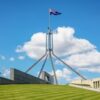
New Zealand Broadcasting Act Needs Update for Streaming Era
One year after Video Ezy opened its first store in Aotearoa New Zealand, the Broadcasting Act 1989 was introduced. It established frameworks and funding for local content that largely still exist.
But in 2025, New Zealanders’ viewing and listening habits are radically different. We’ve shifted from local broadcasters to international streaming and online media services. Video and music streaming platforms now reach more people than local TV and radio .
This brings convenience and access to a world of film, TV, news, and music. But it also means local content risks being swamped on its own shores . A recent discussion document from Manatū Taonga/Ministry for Culture and Heritage is the latest attempt to address the problem.
Among the suggested changes to local content funding, promotion, and distribution are:
Some of these are welcome – and long overdue. But broader media reform must also take this opportunity to create future-proofed policy; one that’s responsive to where local audiences are consuming content, and which supports the media sector to adapt to a rapidly changing landscape.
New Zealand media, already hit by wider platform choice and the movement of advertising revenue offshore , has experienced deep job cuts, including at state-owned TVNZ, and the complete closure of Newshub.
As audiences migrate towards online streaming services, TVNZ’s digital platform TVNZ+ now has a daily reach of 26% of local audiences . In 2024, nine New Zealand shows featured in its top 20 most watched .
While that might seem positive, Netflix, YouTube, Facebook, and Instagram each individually outperform TVNZ+ viewership . And many global video-on-demand platforms have fewer than ten local titles available for New Zealand audiences to watch.
Local music is also struggling. In 2024, only two national radio stations hit the voluntary 20% local music target . Only one local song featured in the end-of-year top 50 singles charts .
These figures might suggest New Zealanders aren’t interested in local content – but that isn’t necessarily true. If we compare local media structures to overseas markets, we see major differences in the opportunities for local content to reach audiences.
Unlike other comparable countries, New Zealand lacks government-owned and fully-funded platforms for locally produced content to find local audiences. Where these platforms exist overseas, engagement with local content is higher.
For instance, Norway’s publicly-owned youth station saw local music comprise 50% of its annual top 40 charts in 2023. Australia’s state-funded Triple J has a 40% local music quota , and the state-owned, advertising-free ABC iview platform has a weekly national audience reach of 62% .
Announcing his government’s creative sector strategy last year, Minister for Arts, Culture and Heritage Paul Goldsmith said it aims to “nurture talent and support a pipeline to provide sustainable career opportunities”.
The strategy also speaks of “modernising and streamlining government regulation to enable our cultural sectors to thrive”.
But there are significant omissions in the latest discussion document. Video gaming, for example, is largely missing from the proposals, although research suggests the industry could represent up to 44% of global consumer entertainment spending by 2040 .
Global video sharing platforms such as YouTube, TikTok and Instagram are similarly absent in the proposals, despite their 81% daily reach among Aotearoa New Zealand’s 15-39 age bracket .
Addressing those omissions and strategically embracing new opportunities offers a chance to support local producers in two key ways: enhancing the global presence of New Zealand content, and ensuring local audiences see themselves in the media they enjoy.
This would require an ambitious rethink around media infrastructure and investments, focused on what can have the biggest impact long term. This might include:
It’s vital that any proposed policy changes are fit for purpose and adaptable for years to come.
Past attempts at media reform in Aotearoa New Zealand have often been reactive to changing environments, rather than proactive. But there’s an opportunity now to consider more meaningful changes, addressing current challenges while looking to the future.
Jesse Austin-Stewart has completed commissioned research for NZ On Air and participated in focus groups for Manatū Taonga Ministry for Culture and Heritage. He has received competitive funding from Creative New Zealand, NZ On Air, Manatū Taonga Ministry for Culture & Hertiage, and the NZ Music Commission. He is a writer member of APRA AMCOS and a member of the Composer’s Association of New Zealand
Catherine Hoad has previously completed research in partnership with or commissioned by APRA AMCOS, Toi Mai Workforce Development Council, Manatū Taonga Ministry for Culture & Heritage, ScreenSafe, and NZ On Air.
Dave Carter is a writer member of APRA AMCOS and has previously received funding from Manatū Taongao Ministry for Culture and Heritage.
Oli Wilson has previously completed research in partnership with or commissioned by APRA AMCOS, Toi Mai Workforce Development Council, Manatū Taonga Ministry for Culture & Heritage and the NZ Music Commission. He has also received funding, or contributed to projects that have benefited from funding from NZ on Air, the NZ Music Commission and Recorded Music New Zealand. He has provided services to The Chills, owns shares in TripTunz Limited, and is a writer member of APRA AMCOS.


